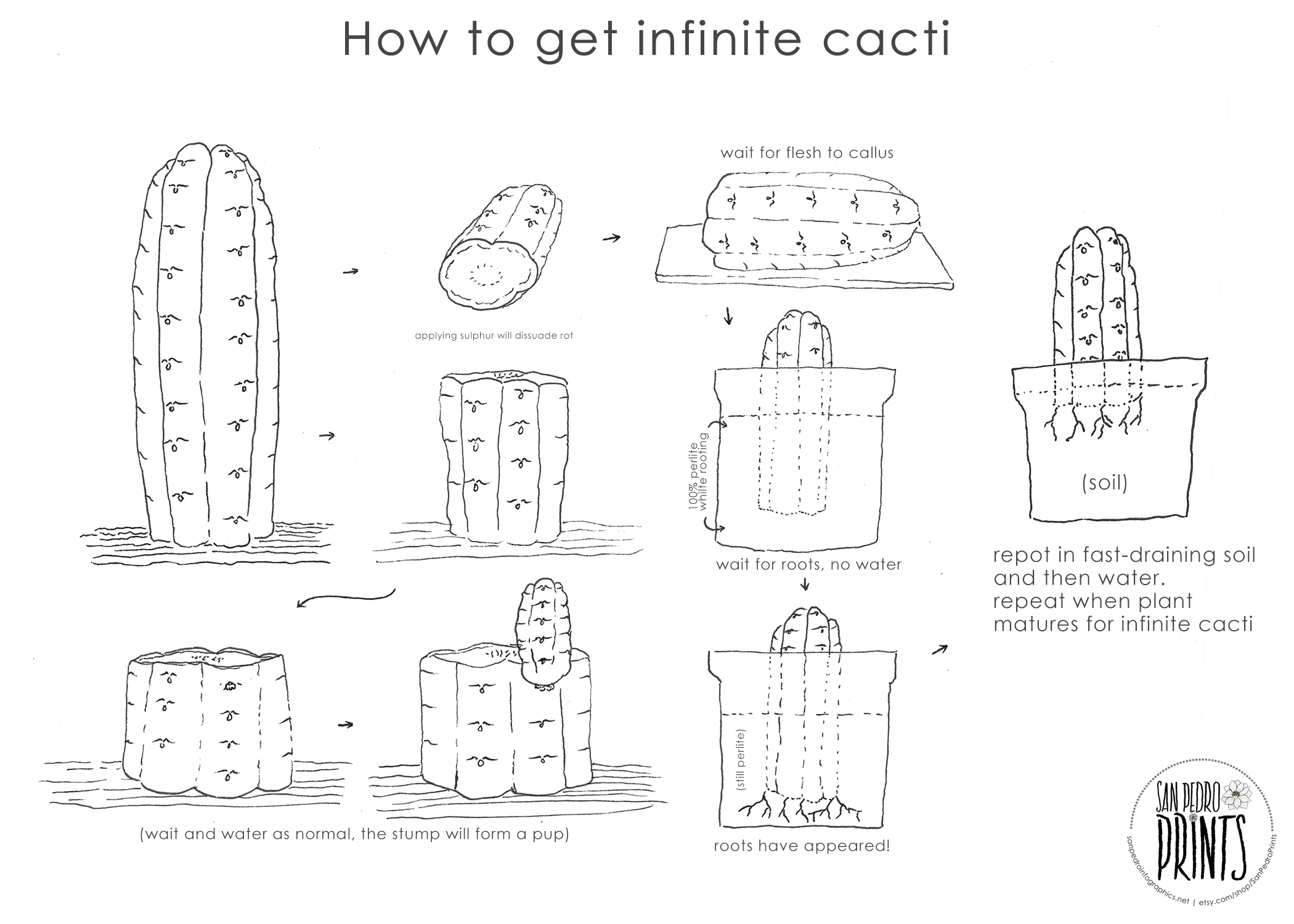Grafting cacti

Grafting cacti might seem like magic. That's because it is. Like all things related to nature, there are a million ways to do this. The more you learn, the more things you thought were true turn out to be only mostly true, or outright wrong.
Apart from propagating, grafting is the thing that really drew me to growing cacti. I had first learned about grafting plants when reading about the surviving grape vines of europe being supported by grape stocks resistant to whatever was killing them but never really gave it much though other than "wow, it's cool you can do that"
Later, I learned about guerilla grafters that graft fruiting branches like apples and stonefruit to trees in cities, converting them from decorative to a food source, and that was one of the first times I really started to think of all the other possible applications of grafting plants
Flash forward years later and I'm reading about lophophora. You know the ones, slow growing, said to reach maturity after 30 years sometimes, and come to find out all about grafted lophs and the enourmous world of grafted cacti.
So, now you're like, hey shut up and tell me how to graft stuff. Cool, same page, here we go:
This here is one of the most common grafting technique I've seen. In the top left of the image, we have what will be our 'scion' or the part of the cactus that is grafted onto the stock and grows. Right now in the image, it's just a pup of a rarer trichocereus. Instead of waiting for it to grow on its own roots, which is possible but will take longer, we're going to give it a power boost.
Chop off the bottom of the pup, use a razor-sharp knife that is relatively thin, as a thick blade can damage the flesh and I find less success when that happens as it can create spaces for rot to grow. The bottom is likely too small to be grafted, but other trichocereus growers will laugh at the notion and if you have left some areolae on the bottom there, you can try to graft it on something else. Else, toss it in the soup. Cutting the bottom off will reveal the vascular ring of the pup, generally your scion is smaller than the stock and will have a smaller radius vascular ring.
This ring has the tubey-things that bring nutrients from the roots up to the rest of the plant to grow. You'll see after cutting off the top of your grafting stock (in this image a PC cactus, great grafting stock) the vascular rings on those two pieces as well. The top you cut off may be big enough to propagate or graft as well.
The idea here is pretty simple, you want to have those rings overlap, becuse the two parts of the plant (scion and stock) will meld together, the stock will pass its growth potential onto the scion, and the scion will see explosive growth compared to what it would see growing on its own roots.
What this image does not show is pressure. Pressure is needed in some way to keep the scion and stock from separating and ensure they meld. There are a lot of ways to do this, personally I prefer using rubber bands.
You do not need to water the cactus while they are melding, and I would advise against it as if you spill some water on the area where you grafted it can promote rot. Provided you've lined them up well, kept firm pressure but light enough as to not damage the plant, and left it along, the scion and stock should be melded within 2ish weeks, maybe more, maybe less.
Your graft will fail sometimes. You will do things wrong. You will do things right and your graft will still fail. However, many times you'll get ti right, and it will take, and you should notice new growth starting to form on the scion after its first watering
Other notes:
Look our for pups coming from the grafting stock. Even if it has taken the scion, it might want to put out more pups. These should be removed as soon as possible so that the stock can focus its energy on the scion. When the scion is large enough the stock will pup less, and maybe will stop pupping at all, leaving all the growth to the scion.

